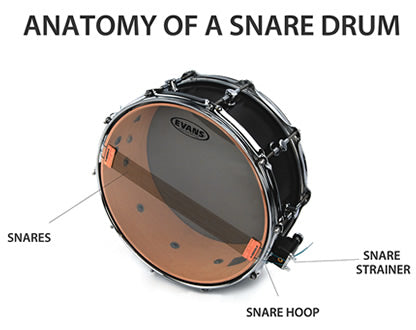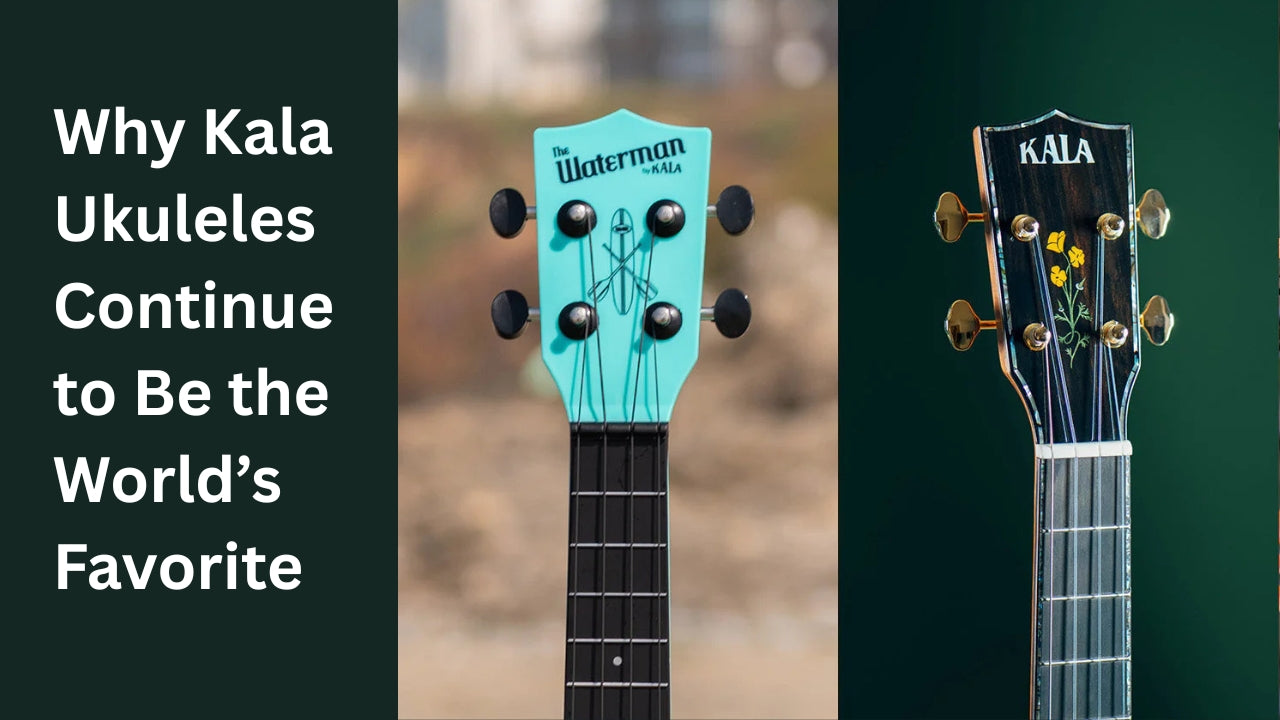
How to Choose an Acoustic Drum Kit
Choosing an appropriate acoustic drum kit for a studio, school, or church can lead to a number of questions. This guide will help you understand the fundamental characteristics of drums so that you can make an informed choice. As always, your BAJAAO Sales Engineer has loads of information about drum-related issues.

Top (batter) head
The most basic component of a drum, the head is a round membrane — made of plastic or animal hide — that is stretched across a shell, with varying degrees of tension (tightness).
Hoop
A modern drum hoop is most often made of either cast or stamped metal (although many drummers prefer wood hoops), and it contains a flange shaped to hold the head on the shell for tensioning.
Tension rod
Tension rods mount through holes in the hoop and thread into the lug to maintain the desired tension.
Lug
Lugs are normally made of metal and mount on the shell to receive the tension rods. Lug designs can vary from simple to very complex, and they often contain alignment springs and other features.
Shell
Other than the head, the shell has the most significant impact on the drum’s tone. Most shells are made of wood, but fiberglass, acrylic, and more exotic shells can be found.
Vent
A vent is simply a hole that allows air pressure to be released when the drumhead is struck. Not all drums have vents.
Bottom (resonant) head
A drum’s resonant head plays an important role in defining both the attack and the tone. Most resonant heads are thinner than the top (batter) head.
Bottom hoop
The bottom hoop holds the bottom head on the drum. On snare drums, the bottom hoop includes slots to accommodate the snares (see below).

Snares
The snares — a series of coiled wires stretched across the bottom head — give the snare drum its characteristic “snappy” sound.
Snare strainer
This lever-and-thread device allows the drummer to adjust the snare tension and also to disengage the snares entirely from the head for a tom sound.
Snare hoop
This specialized hoop contains slots in its sides to allow the cords or straps holding the snares to pass through.
Components of a Drum Kit
Although there can be dozens of different drum kit configurations, most begin with these components:
-
Kick drum (bass drum) – The lowest-pitched drum in the kit. Generally used to provide the rhythmic foundation of the piece of music.
-
Snare drum – The distinctly snappy counterpoint to the kick drum. The snare drum assists in outlining the rhythmic framework, and it also serves to highlight accents in the music.
-
Tom(s) – Ranging in pitch from high to low, toms provide tonal color and are often used to play “fills” that bridge two sections of a song. A drum kit may contain one, two, three, or more toms.
-
Cymbals – The metallic “soprano” voices of the drum kit. A basic set includes ride, crash, and hi-hat.
-
Hardware – The essential gear that makes a drum kit playable. Includes a kick (bass) pedal, snare stand, cymbal stands (including a hi-hat stand), tom holders and legs, and other items as needed.
 What is a Shell Pack?
What is a Shell Pack?
A shell pack most often includes only the bass drum and the toms. Items such as the snare drum, the stands, and the pedals must be purchased separately. Shell packs are popular because most drummers have very specific preferences for the snare drum, pedals, and other hardware they use
.
Are Two Toms Enough? Are Four Toms Too Many?
You may have seen drummers in concert or on the screen whose kits included a multitude of toms. The reality is that the bass drum and the snare drum are the primary components of a drum kit. Toms are most often used for “fills” — rhythmic phrases that provide a transition from one part of a song to the next. The number of toms used is largely a matter of a drummer’s personal preference, but a basic kit should include at least one small tom (usually mounted on the bass drum) and one large tom (often called a floor tom).
 Drum Heads
Drum Heads
From their early incarnation as animal skins stretched across logs, drum heads and their technology have leaped forward, beginning with the invention of the first plastic head 50 years ago. Available in thick or thin, single- or multi-ply, coated or clear, with reinforced centers or edges, the range of head types can seem overwhelming. However, when forced to choose, you should remember that moderation is the key: a general-purpose, medium-weight head will usually do the job. For a hard-hitting, loud drummer, a heavier- weight or double-ply head can withstand the pressure. If tuning out overtones and controlling ring is important, then heads treated with sound-controlling centers or edges will help.
Drum Shell Woods
Most drum shells are constructed of several thin plies of wood that are glued together and bent into shape, often with the assistance of steam. Much like the tonewoods used in making guitars, the types of wood that a shell can be made of produce different characteristics of attack and tone. Here are some of the most common shell woods:
-
Mahogany – One of the softest woods, mahogany has a softness that gives it a low fundamental tone, for good bottom-end punch.
-
Maple – Maple falls in the middle when it comes to both hardness and tone. Its pitch is higher than mahogany’s, yet it is considered “warm” when compared to harder woods. Maple has been among the most popular of shell woods for years.
-
Birch – Among the hardest shell woods, birch has a bright sound and a sharp transient attack. The volume possible with birch makes it a pick for drummers in loud live settings.
-
Bubinga – Sometimes called “African rosewood,” bubinga is a hard wood that is gaining popularity. It’s sometimes used as the inner ply of a shell (for attack), while other woods are used for the outer plies.
Regardless of the type, drum shell woods can be stained, painted, or wrapped in just about any finish imaginable.
 Cymbals
Cymbals
The scope and characteristics of cymbals are too broad to cover here. Cymbals provide a metallic “soprano” range of tones to complement the “thuddy” characteristics of drums. Here are three of the most commonly used cymbals:
Ride – A medium-weight cymbal that helps outline the rhythmic framework of a song, along with the kick and the snare. Ride cymbals can generally withstand repeated strikes without building up too much of a roar.
Crash – A thin, often small-diameter cymbal that produces an explosive “crash” when struck on its edge. Crash-cymbal overtones normally die away quickly, which gets them out of the way of the rest of the music.
Hi-hat – Actually two cymbals, with one inverted atop the other on a special stand. Hi-hat cymbals are very versatile, able to be played “closed” with the stand’s foot pedal pressed down, “open” with the pedal up, and everywhere in between. Simply pushing down the pedal without striking the cymbals produces a nice “chick” sound.
What to Look For…
- Establish a budget. If money is tight, then remember that most manufacturers offer several different grades of drums, at different price points. The value-priced kits are still excellent-quality instruments; they often incorporate many of the features of the more expensive kits.
- Define your acoustic space. Where will the drums be played? If they’re likely to stay in one location, then you can choose sizes and shell material that “fit” the space. If the drums are likely to travel a lot, then choose a kit that’s easy to transport, perhaps one with maple shells — the most versatile wood.
- Choose a musically appropriate combination. Here’s where you decide how many toms and cymbals are necessary to realize your musical goals.
- Choose a finish. Drums today come in a wide array of finishes, from natural wood to plastic wraps. Assess the environment the drums will occupy. If they’re set up in a school, then a durable plastic wrap that’s immune to bumps and scrapes may be the choice. A house of worship might call for a more aesthetic appearance, so stained wood may be the answer.
Remember, your BAJAAO Sales Engineer can help you decide which acoustic drums are best for your situation. Give us a call at
022 6105 4386!
 What is a Shell Pack?
What is a Shell Pack? Drum Heads
Drum Heads Cymbals
Cymbals





Share:
Protect your Ears!
Watch James Hetfield Record New Metallica Music